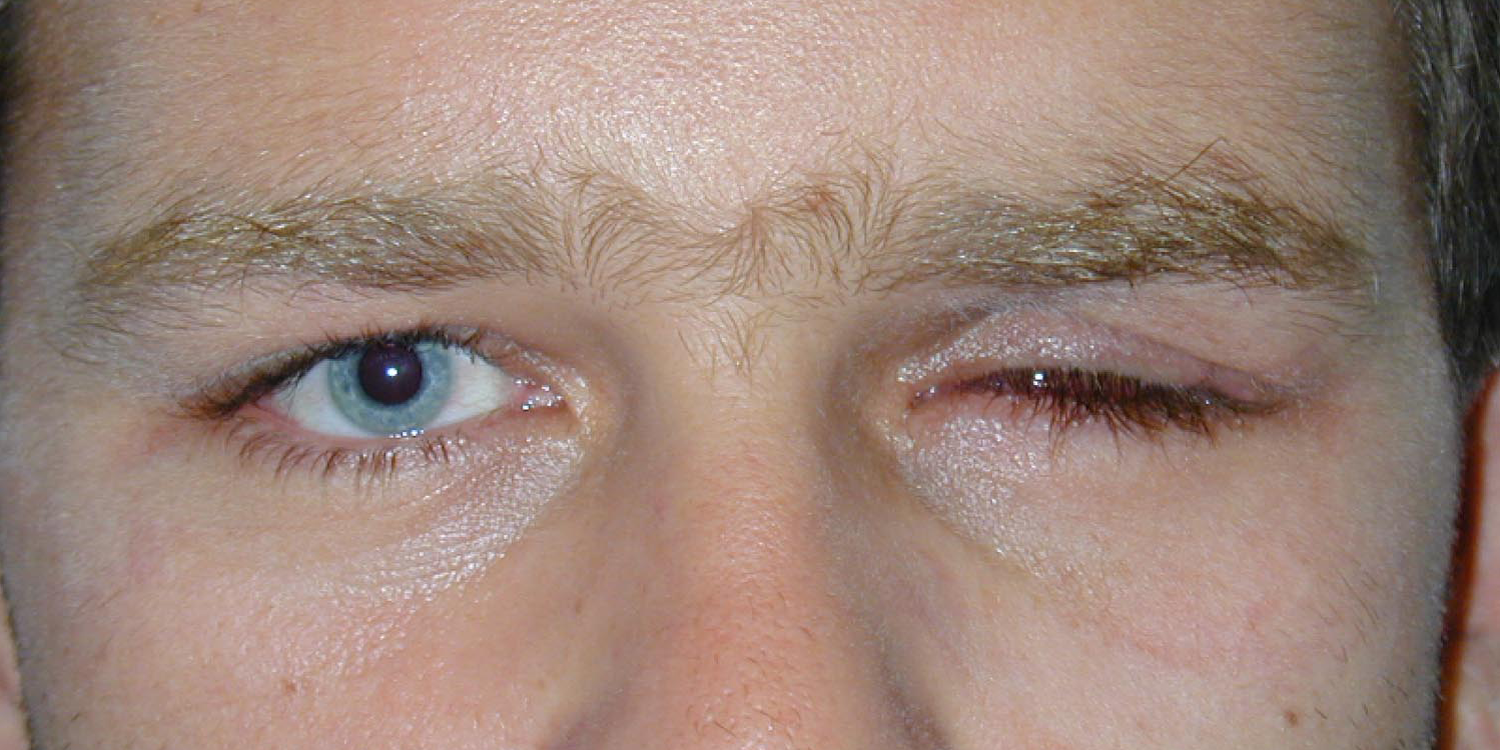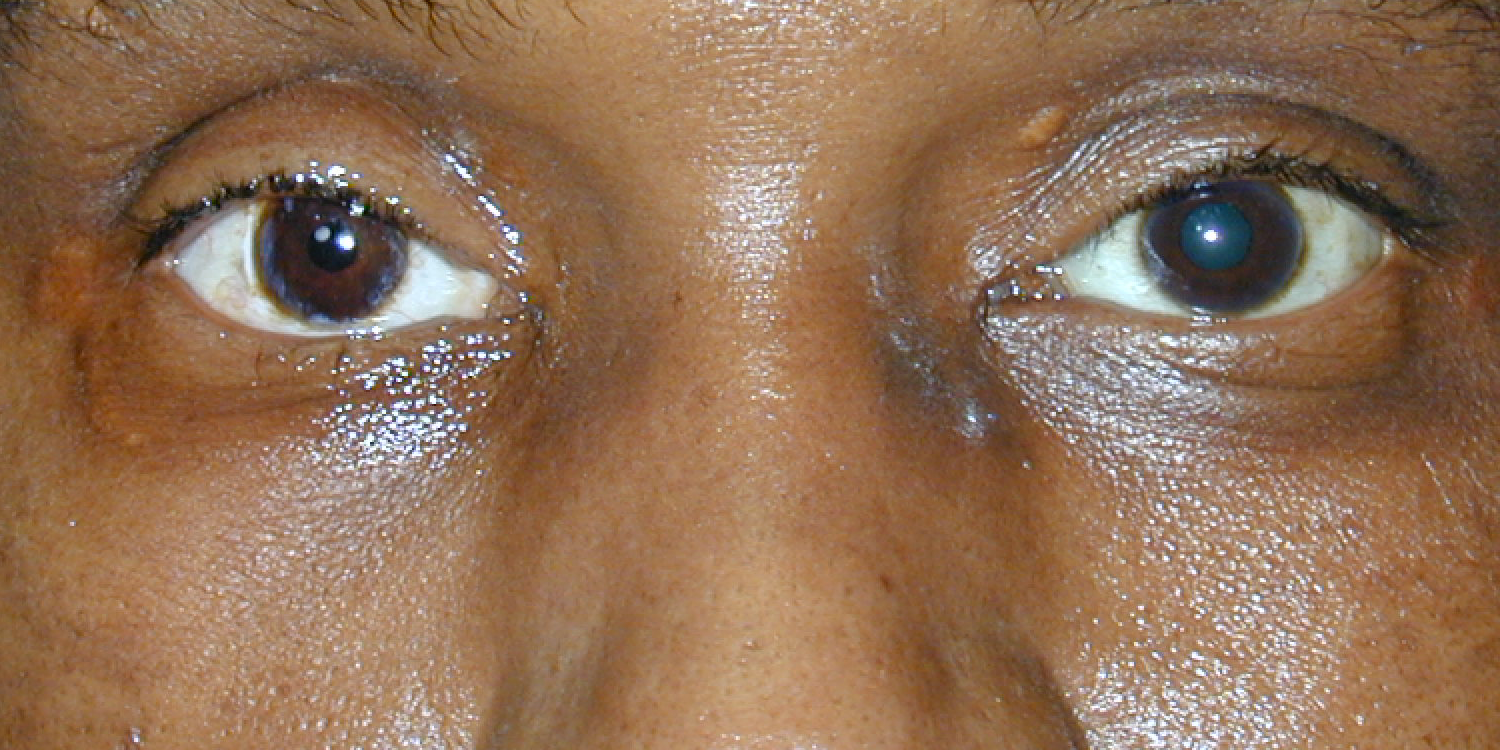Specializing in Custom Made Facial and Ocular Prosthetics
Ocular Prosthetics
When a person learns that it is necessary to have an eye removed, the news creates understandable concern about how this procedure will affect their life, their appearance, and their ability to function. Due to advances in the field, the loss of an eye no longer means the loss of natural appearance. We work with doctors and patients to develop a custom-made prosthesis that is both realistic and functional. Our personalized approach ensures symmetry and an exact color match, while delivering a comfortable, functional prosthesis.
Please remember that the quality and realism that is achieved flows from the ocularist's hand that created it. No two ocularists have the same technique; therefore, results will vary. Our goal is to create the most realistic, comfortable prosthetic for our patients.
Please visit our Photo Gallery to see more examples of ocular prostheses.
What are Anophthalmia and Microphthalmia?
Anophthalmia and microphthalmia are often used interchangeably. Microphthalmia is a disorder in which one or both eyes are abnormally small, while anophthalmia is the absence of one or both eyes. These rare disorders develop during pregnancy and can be associated with other birth defects.
What is the Treatment for Anophthalmia and Microphthalmia?
There is no treatment for severe anophthalmia or microphthalmia that will create a new eye or restore vision. However, some less severe forms of microphthalmia may benefit from medical or surgical treatments. In almost all cases improvements to a child’s appearance are possible. Children can be fitted for a prosthetic (artificial) eye to promote socket growth. A newborn with anophthalmia or microphthalmia will need to visit several eye care professionals, including those who specialize in pediatrics, vitreoretinal disease, orbital and oculoplastic surgery, ophthalmic genetics, and prosthetic devices for the eye. Each specialist can provide information and possible treatments resulting in the best care for the child and family. The specialist in prosthetic diseases for the eye will make conformers, plastic structures that help support the face and encourage the eye socket to grow. As the face develops, new conformers will need to be made. A child with anophthalmia may also need to use expanders in addition to conformers to further enlarge the eye socket. Once the face is fully developed, prosthetic eyes can be made and placed. Prosthetic eyes will not restore vision.
How do Conformers and Prosthetic Eyes Look?
A painted prosthesis that looks like a normal eye is usually fitted between ages one and two. Until then, clear conformers are used. When the conformers are in place the eye socket will look black. These conformers are not painted to look like a normal eye because they are changed too frequently. Every few weeks a child will progress to a larger size conformer until about two years of age. If a child needs to wear conformers after age two, the conformers will be painted like a regular prosthesis, giving the appearance of a normal but smaller eye. The average child will need three to four new painted prostheses before the age of 10.
For more information on Microphthalmia and Anophthalmia visit The National Eye Institute website.
What to Expect After Surgery?
Following enucleation or evisceration, the surgeon will likely place an orbital implant to recover some of the volume lost in the eye socket. The orbital implant is attached to the extraocular muscles, providing movement of the implant with the fellow eye. Typically, the better the movement of the implant, the better the motility of the artificial eye or scleral shell.
In most cases, a plastic piece called a conformer is placed in the socket following surgery and is worn in place of the prosthesis. It is placed to maintain orbit volume and to help form the cul-de-sacs (lid pockets) that will hold the prosthesis in place. The conformer should always be left in so that socket volume is not lost during the healing process. This also prevents shrinkage of the tissue and helps to prepare the socket for ocular prosthesis placement. Until the ocular prosthesis is fit, the upper eyelid can be droopy in appearance. Once in place, the prosthesis will help support the eyelid and allow the lids to open and close normally.
The ocular prosthesis is fit four to six weeks after surgery in order to allow for the eye socket tissues to heal adequately.
For more information about surgical procedures, please visit the American Society of Ocularists website.
Please visit our Photo Gallery to see more examples of artificial eyes.
Artificial Eyes
An ocular prosthesis—otherwise known as an artificial eye—is a plastic prosthesis used when an eye is missing (due to microphthalmia or anophthalmia) or surgically removed (either by enucleation or evisceration).
Please visit our Photo Gallery to see more examples of scleral shells.
Scleral Shell
A scleral shell fits flush over the existing scleral white surface of a blind, injured, or eviscerated (ocular contents surgically removed) eye. In these cases, the non-functioning eye is left within the eye socket and a prosthesis is molded to fit between the lids and the blind eye. The wearing time for a shell varies with each individual and imparts better eyelid function as well as a better appearance by closely resembling the remaining good eye, while leaving the affected eye in the socket. We strongly suggest that you consider leaving the affected eye in its socket if it is not causing you pain. You may discuss this option with your doctor.
Fabricating an Ocular Prosthesis
The process of designing and fabricating an ocular prosthesis requires multiple office visits, which may be lengthy, as well as numerous hours of laboratory work. The following steps will be necessary:
Step 1: The creation of a custom ocular prosthesis begins with an impression (mold) to duplicate the affected area (eye socket). The impression is made by injecting a molding agent into the socket. Once set, the mold is removed from the socket.
Step 2: From the mold, a wax model is made to try in the socket. Wax is used because it can be easily changed and carved or added to quickly. The goal is lid symmetry and movement of the wax model.
Step 3: Once this symmetry is achieved, the wax model is cast into a plaster mold and an acrylic duplicate is made.
Step 4: With the patient present in the lab, the future prosthesis is painted to match the fellow eye. The process continues until an exact color match is achieved.
Step 5: The prosthesis is polished to a high gloss.
Step 6: The prosthesis is delivered to the patient.
Please visit our Photo Gallery to see more examples of pediatric fittings.
Fitting a Child for an Ocular Prosthesis
Kids can lose an eye either to trauma, disease or birth defect. Your pediatric ophthalmologist will be able to tell you if your child is ready for a prosthesis or if some other service is required, i.e. a conformer to stretch the eye socket.
If surgery is required, the fitting process begins 4-6 weeks later with a consultation, which provides an opportunity for your child to become comfortable with us and give them a brief and simple explanation of what will be done during the visit.
It is common to expect three to four visits for the initial prosthesis.
Once the prosthesis is completed, a follow up appointment is scheduled for one month, then return visits every three months. This schedule is mainly due to the child's growth and color change during the first years of life. It is often possible to enlarge your child's current prosthesis if only minor changes are required. This defers the need for a completely new prosthetic eye for at least some time.
Maintaining an Ocular Prosthesis
At one time, all artificial eye wearers were told to remove and clean the prosthesis on a regular basis. It has since been learned that removal on a regular basis keeps the eye socket mildly irritated. Today's artificial eyes generally need less attention due to improved fitting and polishing techniques. Many people do not feel the need to remove their prosthesis between visits to their ocularist.
However, should you need to remove your prosthesis, removal and reinsertion is an easy process. Your ocularist can show you the correct method. If you do remove your artificial eye, be sure to thoroughly wash your hands first; this will reduce the risk of infection and irritation.
Removing the Prosthesis
Wash your hands thoroughly
Apply suction cup to center of prosthesis
Holding suction cup with one hand, pull down lower lid
Slide prosthesis down and out from underneath lid
Cleaning the Prosthesis
Rinse prosthesis thoroughly with warm water
Rub with a mild soap to clean away debris and hand oils (we recommend Dawn® Dishwashing Detergent)
Rinse thoroughly
Reinserting the Prosthesis
Apply suction cup slightly below center of iris
Lift upper lid and slide prosthesis up underneath
When prosthesis has been pushed up under lid, release upper lid and pull lower lid down
Set prosthesis in place
Squeeze suction cup to release from prosthesis
Note: It is not required to use a suction cup to remove nor to insert prosthesis.
Maintaining the Prosthesis
It is recommended that you return to our office every six months to one year to have your prosthesis polished and resurfaced. Usually there is a significant build-up of salt and protein deposits with time. Polishing removes these potentially irritating deposits. We will also evaluate your prosthesis' fit and appearance. Sometimes a build-up or adjustment may be called for, due to subtle changes in the eye's socket tissue.
Removing the Prosthesis
Wash your hands thoroughly
Apply suction cup to center of prosthesis
Holding suction cup with one hand, pull down lower lid
Slide prosthesis down and out from underneath lid
Cleaning the Prosthesis
Rinse prosthesis thoroughly with warm water
Rub with a mild soap to clean away debris and hand oils (we recommend Dawn® Dishwashing Detergent)
Rinse thoroughly
Reinserting the Prosthesis
Apply suction cup slightly below center of iris
Lift upper lid and slide prosthesis up underneath
When prosthesis has been pushed up under lid, release upper lid and pull lower lid down
Set prosthesis in place
Squeeze suction cup to release from prosthesis
Note: It is not required to use a suction cup to remove nor to insert prosthesis.
Maintaining the Prosthesis
It is recommended that you return to our office every six months to one year to have your prosthesis polished and resurfaced. Usually there is a significant build-up of salt and protein deposits with time. Polishing removes these potentially irritating deposits. We will also evaluate your prosthesis' fit and appearance. Sometimes a build-up or adjustment may be called for, due to subtle changes in the eye's socket tissue.
Lubricating the Prosthesis
A few artificial eye wearers experience “dry eye” due to lack of lubrication. In these cases, the ocularist will often recommend an aqueous lubricating solution such as artificial tears. In cases where the individual cannot close the eyelids all the way or the eyelids do not close during sleep, an oily lubricant may be recommended. We recommend and use a silicone lubricant called Ocu-Sil™, which can be obtained at www.ocu-sil.com.
Storing the Prosthesis
If the prosthesis must be left out of the socket overnight or longer for any reason, store it in water or in a contact lens soaking solution.
Other Points to Remember
If you must rub the eye, rub towards the nose with the eyelids closed. Wiping away from the nose may cause the prosthesis to fall out.
Do not expose the prosthesis to alcohol, ether, chloroform, or any other solvents as these may damage the acrylic beyond repair.
Most people can wear their artificial eye safely while swimming; however, to prevent accidental loss, you should wear swim goggles or remove the eye and store it safely.
Protect your remaining eye by wearing protective glasses.








